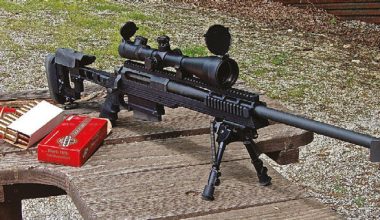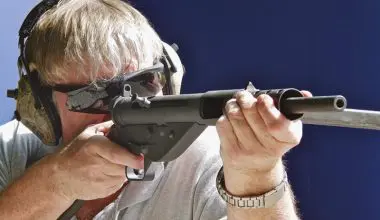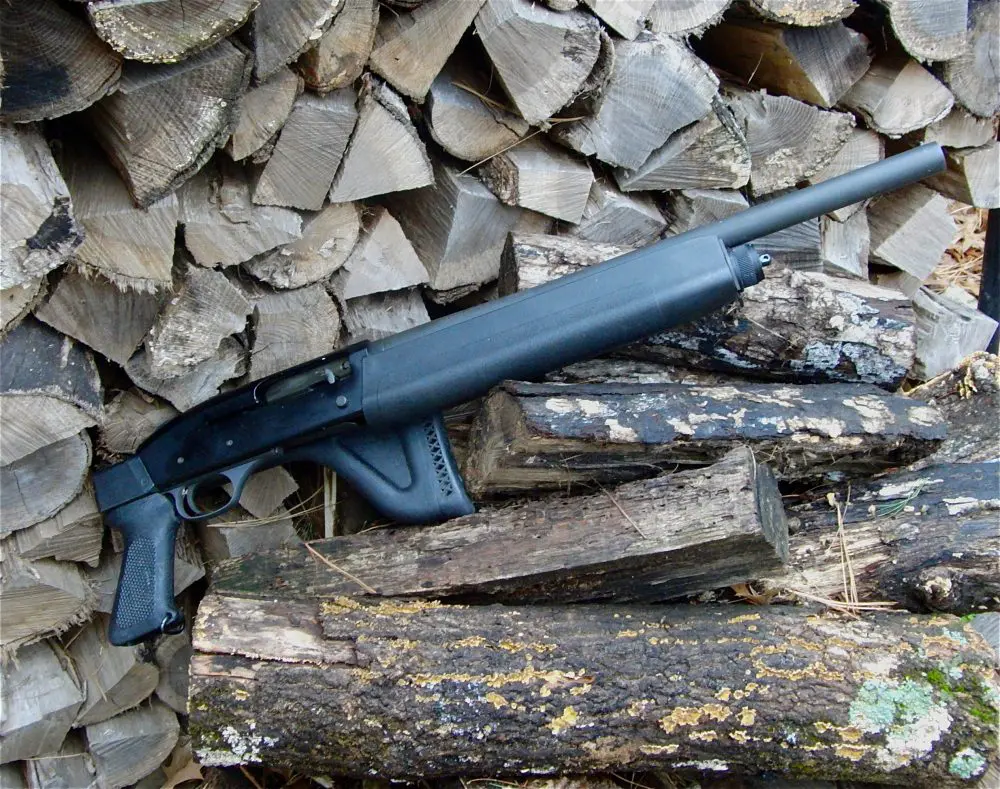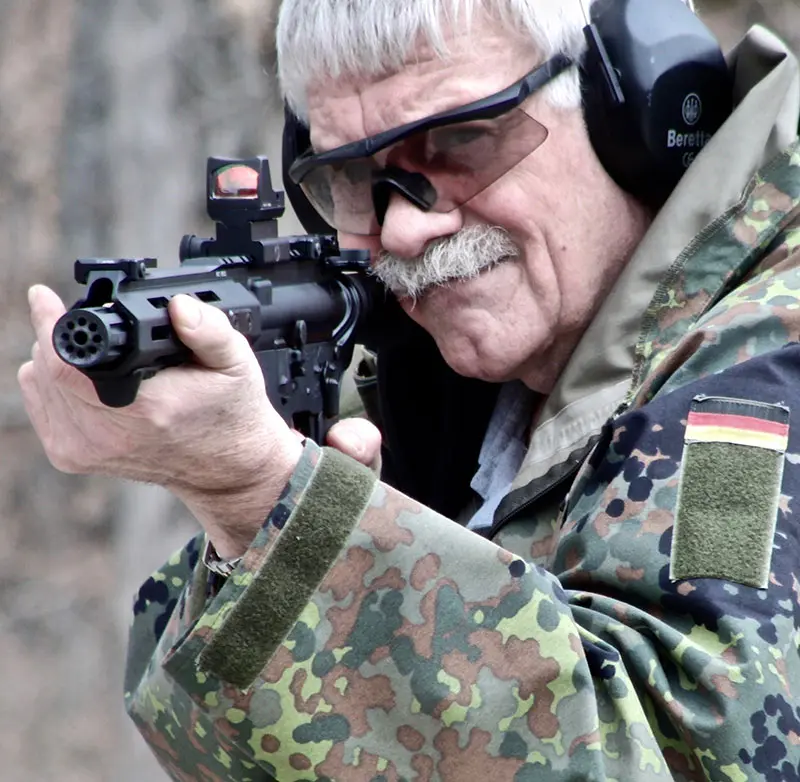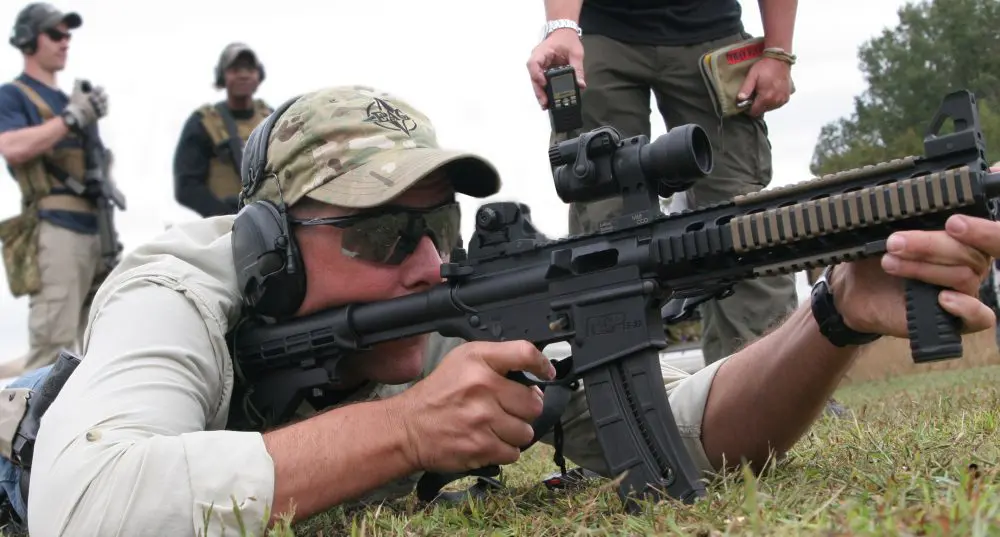I originally learned some very basic methods for a ballistic solution for a longer shot. You know, watching trees sway or dropping a piece of grass or leaf for windage, using mil dots for ranging, and maybe checking the temperature.
As time has passed, technology has made calculating long-range shots easier, and the use of .338 Lapua and .50 BMG sniping rifles has made it possible to dope a shot to 1,500 meters or more. I’ve progressed from filling out individual ballistic cards on rifle/ ammo combinations and annotating them with temperature and other data to using ballistic calculators and laser rangefinders.
Anyone tasked with taking longrange tactical shots needs to learn how to figure out all his data himself and create his own dedicated ballistic tables first. That way, if for one reason or another the high-tech devices don’t work, he can still take his shot.
I need to make a few comments for those who may not be familiar with all that goes into getting a ballistic solution for a longer-range shot. For mid-range shots of 300 to 600 meters, typical .308 sniper distances, generally elevation and windage adjustments are all that are needed.
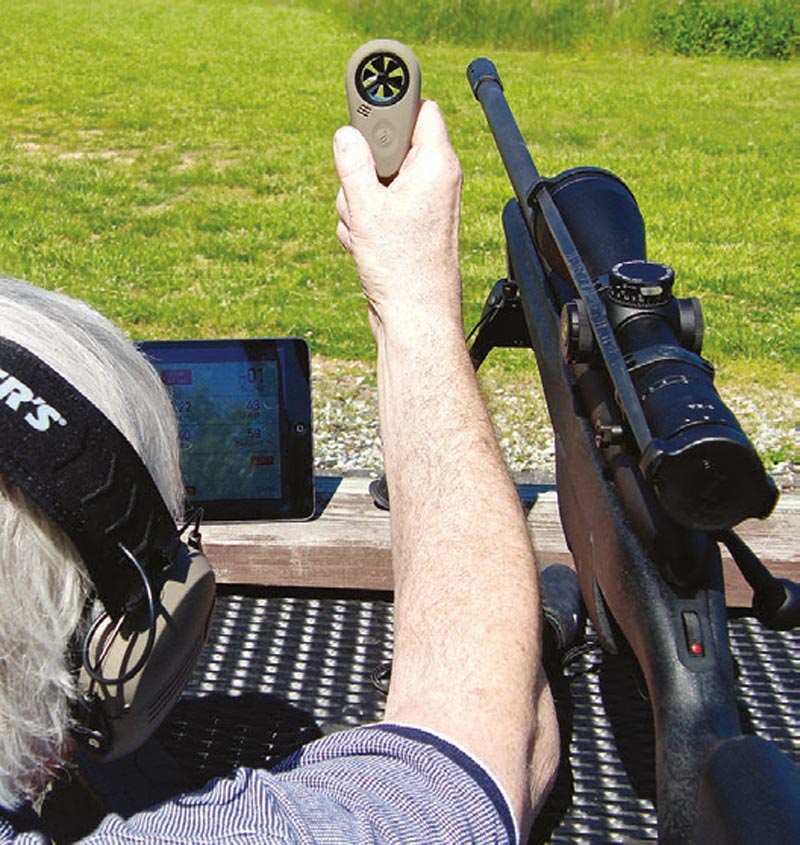
I like scopes with B.D.C. (Bullet Drop Compensation) and I especially like Leupold’s Custom Dial System. With one of their dials designed for the cartridge I always use, once the scope is zeroed, I can quickly dial in my range and, unless it’s very windy (when some windage adjustments are needed), send a round downrange to 500 or 600 meters.
But at longer ranges, other factors become important. For example, spin drift, which occurs as the bullet slows down, from a right-hand twist barrel can cause the bullet to drift eight to nine inches at 1,000 meters. The Coriolis effect comes into play at longer ranges. This is the effect the rotation of the earth has on the bullet in flight as the earth rotates beneath it. Temperature, altitude, humidity, and barometric pressure also affect the flight of a bullet at longer ranges.
Ballistic coefficient is the measure of how well a bullet can overcome air resistance in flight. It is a function of mass, diameter, and drag coefficient. Ballistic coefficients are based on “Standard Metro” figures of 59 degrees F for temperature, barometric pressure of 29.53 inches, and humidity of 78%.
Higher humidity and higher temperature make for a higher ballistic coefficient. The higher the ballistic coefficient, the less a bullet will drift. An increase in temperature or altitude increases the ballistic coefficient, while an increase in barometric pressure decreases the ballistic coefficient.
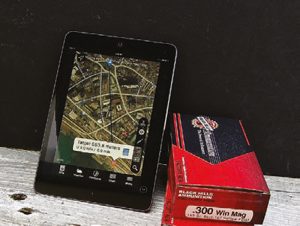
That’s probably more than many readers want to know, but if you want to know even more, the Internet has plenty of info. It should be obvious, though, that having a device that quickly calculates data for you when shooting long range is advantageous.
I recently evaluated the WeatherMeter device and the BallisticsARC app. I recommend purchasing the Weather- Meter and then purchasing the app. It is possible to get weather data with the ARC app by accessing the nearest weather stations to the shooter’s position, but this presupposes you will have Internet access. With the WeatherMeter, readings can be put into your Android or Apple device and incorporated directly into your ballistic solution.
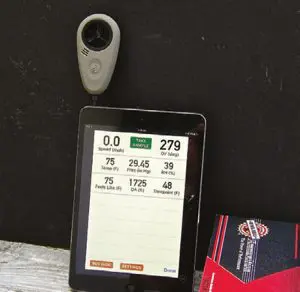
The WeatherMeter measures:
- Wind velocity, while wind direction is measured by the compass on your mobile device
- Barometric pressure
- Temperature, wind chill, heat index, and dew point
- Humidity
- Density altitude
This information may be directly integrated with the BallisticsARC app. This app uses the very powerful JBM ballistic calculator, which allows you to select among 2,500 projectiles and save your bullet and muzzle velocity for future use.
For long-range shooting, taking your muzzle velocity with a chronograph might be advisable, but for testing I’ve been using the advertised muzzle velocity of the Black Hills 190-grain .300 Win Mag: 2,950 feet-per-second.
Targets may be ranged automatically on maps or charts accessed via the Internet, with shot bearing and shot angle immediately displayed.
As the BallisticsARC software incorporates the ability to overlay ballistic data, taking the shot is very quick. For example, once you have laid in your shooting position and your target by “dropping pins” at those positions, you can bring up an overlay showing your distance and how many mils you need to adjust for windage and elevation by pressing the target pin.
Weather data is automatically incorporated if you use BallisticsARC in conjunction with the WeatherMeter.
Other overlays include:
- Max Vital Range: the maximum range a bullet strikes within a desired vital area without adjusting elevation
- Energy Threshold: the minimum energy the shooter wants to deliver on target
- Velocity Threshold: the minimum velocity the shooter wants to maintain to a target
Custom range cards can be built and archived for future use and especially designed for specific AOs (Areas of Operation). A police urban sniper could pre-develop range cards for a multitude of possible incident sites (airport, port area, sports stadiums, et al).
As I write this, the BallisticsARC app is dependent upon real-time Internet access, which can be a problem in some AOs, but I am assured that by the time you read this, an update will be available that allows maps of an AO to be downloaded in advance and archived.
I am still learning to use the WeatherMeter and BallisticsARC combo, but I am quite impressed. As mentioned earlier, I believe a tactical shooter needs to know how to develop his data, use a laser rangefinder, and use mil dots or other ranging systems within his scope. But with this device and app, he will not have to use them most of the time.
I use my iPad Mini because I can see more detail of the area in which I will be putting a shot. Some readers may be more likely to use an iPhone or Android device. I find that my iPad Mini easily slips into a pocket of my gun case along with the WeatherMeter, which comes in a hard plastic case and stores easily.
Each time I’ve used the BallisticsARC app and the WeatherMeter, I’ve become more cognizant of how I can quickly gather all my data to dope a shot. Anyone who has a basic understanding of ballistics and rifle shooting and uses a mobile device can quickly learn to use them.
Total investment for the device and app is only about $100. Not only will they help you shoot more accurately, but for many they will also teach you more about how you take that shot.
I recommend purchasing the WeatherMeter through Brownells, as they always give great service.
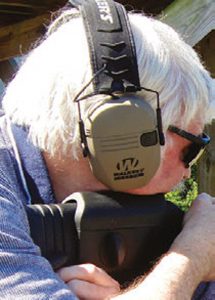
Walker’s Razor Series Muffs
Because I was wearing and testing the Walker’s Razor Series Slim Shooter Folding Muffs while testing the WeatherMeter and BallisticsARC, I would like to give them a quick mention.
First, they are slimmer than many electronic muffs I have used in the past, which is a good thing. The two omni-directional microphones and HD speakers allow conversations around you to easily be heard, while Sound Activated Compression kicks in with a 0.02-second reaction time if a shot is fired. Since I was shooting a .300 Win Mag while testing the Razor Muffs, I appreciated that sound was immediately deadened.
Another plus is that the volume control knobs are recessed and out of the way. The external battery door is a feature that appeals to me, as I have had bad experiences with some internal battery compartments jarring open and dumping the batteries without my realizing it. Maybe I’m a klutz, but I like the external compartment.
Cost is very reasonable, at a suggested retail price of $79.95.
One final comment: since a lot of pictures of me shooting are taken for books and articles, I like the fact that the Razor Muffs look good, even if I don’t always!
